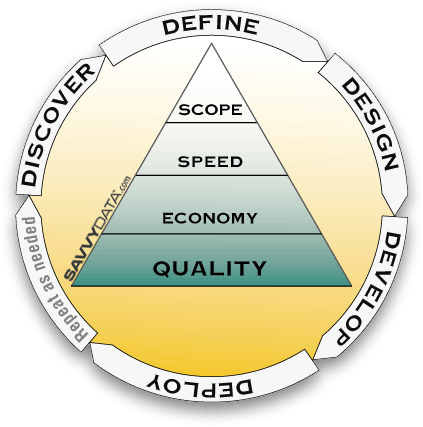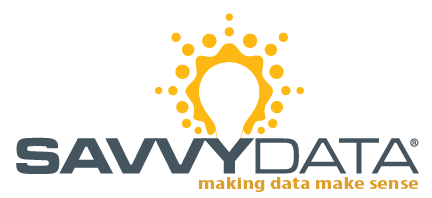Our Project Management Process
Our proven 5-phase project process radically increases the probability of a successful outcome.
The SavvyData Development Lifecycle
The time to complete a cycle of phases (“the 5 Ds”) is determined by the size and complexity of the target objective and the client response time for reviews and approvals. Typically our completion cycles run from 3 weeks to 3 months. For larger projects we recommend grouping sets of functionality so a cycle can be completed within those time frames. If your organization is familiar and comfortable with Agile development methodologies, SavvyData can deliver completed work more frequently with much shorter turnaround times, usually at a lower actual cost. If you’re interested in this, ask us about how we implement the Extreme form of Agile development, and whether your project would be a good candidate for this approach.
Discover
Business analysis and process assessment
Scope estimation
Requirements proposal
Define
Organizational objectives
Use cases, business rules and other requirements
Deployment platforms and development methods
Design
Solution architecture (data schema, security, user/session mgmt, etc.)
Proof of concept for any deliverables that are perceived to be high risk
Development of design concepts for user interaction
Definition of hardware & software requirements
Develop
Solution development based on Use Case scenarios
Final spec of reports, dashboards, and data visualizations
Automation of legacy data transfer for testing, as applicable
Progressive unit testing, with regression testing pre-client testing
Optional deployment to “sandbox” environment for client preview
Deploy
Documentation of deployment processes
Performance testing under load, as required
Formal User Acceptance Testing (UAT)
Final data conversion and migration, as applicable
Training and knowledge transfer
Ongoing maintenance, if applicable
Project Management
SavvyData’s hard- and smart-working team members make a point of communicating early and often, at the start of an engagement and regularly throughout the development lifecycle. We endeavor to quantify known risk areas in advance — not because we are risk averse, but because we are realists who prefer to be prepared. Because information loses value over time, we insist on providing frequent status updates.
